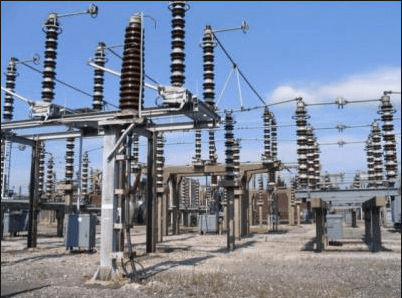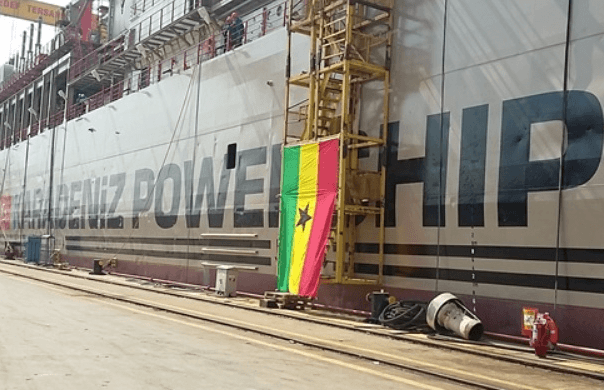Ghana energy sector debt could exceed $8b in two years – Report
 Ghana’s energy sector has been saddled with problems for years. Some of the problems are ripples of bad political and governance decisions, lack of leadership and corruption, leading to accumulated debts.
Ghana’s energy sector has been saddled with problems for years. Some of the problems are ripples of bad political and governance decisions, lack of leadership and corruption, leading to accumulated debts.
A recent World Bank report on Ghana has warned that in two years, by 2025, if no actions are taken to address the issues, the country’s energy sector arrears could exceed $8 billion. The country is currently overburdened by a public debt profile exceeding 80 per cent of GDP.
The report is titled, 7th Ghana Economic Update: Unraveling Inflation’s Toll on Poverty and Food Security.
That goes without saying that government has been subsidising the energy sector with close to $1 billion annually since 2019, according to Mr Habibu Adam, a member of the Energy Sector Recovery Programme (ESRP).
Mr Adam told the Ghana News Agency (GNA) that the situation is attributable to the excess capacity charges and production costs, related to contracts signed in the past with Independent Power Producers (IPPs) to ramp up the energy installed capacity to solve country’s once debilitating power outages known as Dumsor.
“Unfortunately, the manner in which the contracts were structured on the ‘Take or Pay’ basis compounded Ghana’s financial demands from the sector,” he told the news agency.
The Country Director of the World Bank in Ghana, Peirre Laporte had also cited the government’s agreements with the IPPs as problematic and another factor why the energy sector is the biggest driver of Ghana’s public debt.
The energy sector is the biggest driver of Ghana’s debts as the country currently owes independent power producers $1.58 billion, Laporte was cited by the GNA to have said in June this year.
He emphasized that the energy sector debt is a major contributor to Ghana’s debt woes.
Laporte said that the Bank has identified certain factors that were driving the country’s debt situations, and one of the areas the Bank has identified is the energy sector.
 According to Laporte, the deficiencies in the sector characterised by the tariff systems and management issues coupled with expensive power purchases by the state in addition to transmission losses, were the major problems in the energy sector driving Ghana’s debts.
According to Laporte, the deficiencies in the sector characterised by the tariff systems and management issues coupled with expensive power purchases by the state in addition to transmission losses, were the major problems in the energy sector driving Ghana’s debts.
He noted that the mismatch between the production cost of the IPPs vis-à-vis how much consumers paid led to an upsurge of debts since the government could not make financial commitments to the IPPs.
Mr. Laporte also said the Power Purchasing Agreements (PPAs) the government had signed were expensive. In addition to the exorbitant power purchases the country was paying for energy it does not use due to the ‘’take or pay contracts.’’
“In the case of Ghana, those contracts that have been signed as PPAs are just expensive and the kind of PPAs signed are take or pay. You pay although you do not use it. The fact is that in the past few years, Ghana entered into an agreement at a wrong rate and the wrong price, and it has impacted on the debts situation,” he said.
Recently, the Chamber of Independent Power Producers, which include Sunon Asogli, Cenpower, Karpowership, AKSA, Twin City Energy and CENIT, in an email directed its members not to declare their available power capacity to the system operator beginning July 1 to 8, 2023. The Chamber threatened to shut down power supplies to the country, because the offtaker, the Electricity Company of Ghana (ECG) had failed to settle its debt obligation to the IPPs.
The Chamber’s threat if carried out, would have put the country on yet another brink of power crisis. The IPPs constitute 67 per cent of thermal power produced in Ghana and they produce about half of the total kilowatt of all the power produced in the country.
The full implications of that threat if carried out could be anyone’s guess, considering the country’s experience of what became known as ‘dumsor’.
According to a recently released World Bank report the energy sector continues to require significant budgetary support.
However, the report points out that a combination of electricity underpricing, poor performance of distribution companies, excess power generation capacity and excess gas supply contracts has resulted in the accumulation of sectoral arrears (legacy arrears) totaling about $2.3 billion as at the end of 2022, equivalent to about 3.2 per cent of GDP.
The World Bank therefore warned that without corrective action, these arrears could reach over $8 billion by the end of 2025.
It indicated that in 2019, the Ghana government launched the Energy Sector Recovery Program (ESRP), a roadmap to enhance the governance and restore the financial viability of the energy sector. As the ESRP’s implementation has faced several delays, the plan has been unable to prevent the yearly accumulation of liabilities. Even though the government managed to increase electricity tariffs by 27.15 per cent in September 2022 and 29.96 per cent in February 2023, exchange rate depreciation eroded the gains from higher tariff as a substantial portion of generation costs is incurred in US dollars.
The increase in electricity tariffs, while not sufficient to cover the cost of production, has had devastating consequences on the standard of living of many Ghanaians. Coupled with the COVID-19 crisis, the Ukraine, Russia conflict and inflation, has pushed many more Ghanaians into poverty.
“Results suggest that the increase in prices between January 2022 to December 2022, all other things equal, led to an average purchasing power loss of 15.7 per cent. The poorest 20 per cent of the population lost 16.1 per cent of their purchasing power to inflation in 2022, while the richest 20 per cent lost 15.5 per cent 2022. Household purchasing power losses became more pronounced toward the end of the calendar year as inflation heightened at the end of 2022,” the report said.
In 2022, a transfer of close to 1 per cent of GDP was made to the power sector by the government; in addition to this, new payables from the sector amounted to 1.5 per cent of GDP.
In May 2023, the Public Utilities Regulatory Commission (PURC) announced a further 18.36 per cent increase in electricity and natural gas tariffs (from June 1, 2023) for all consumer groups, following its review of the second quarter of 2023, the report noted.
It also says domestic policy channels – and specific policy design choices, also played a role.
Significant increases in electricity tariffs since September 2022, while necessary for fiscal sustainability, were particularly regressive (it affected the poor more than the rich) in their design. Average electricity consumption among the poorest households is nearly 70 kWh per month and the revised tariffs particularly affected this group.
The main change in the tariff was the lowering of the lifeline tariff, from 50 to 30 kWh, and the elimination of the lifeline tariff (for the full consumption) as soon as a consumer’s electricity consumption exceeded 30 kWh, it added.
The report notes that between September 2022 and June 2023, the PURC conducted three quarterly adjustment of electricity tariffs by 27.15 per cent in September 2022, 29.96 per cent in March 2022 and 18.36 per cent in June per month.
“Consequently, the real increase (combining the impact of changes to pricing and application of the lifeline) was highest for those consuming between 30 and 200 kWh per month. As a result, the implicit subsidy fell but became even more regressive,” the report indicated.
It also said the depreciation of the cedi has contributed to inflation by driving up the prices of imported goods and services, and also putting pressure on prices of domestic substitutes.
“Indeed, there were similar inflation rates for both imported and locally produced food as well as imported and locally produced non-food items. In sum, the exchange rate depreciation led to increases in prices of imports and passed through to domestic production,” the report noted.
Whatever corrective measures the authorities may take, could either turn the tide for good or for the worse.
Emmanuel K Dogbevi
Copyright ©2023 by NewsBridge Africa
All rights reserved. This article or any portion thereof may not be reproduced or used in any manner whatsoever without the express written permission of the publisher except for the use of brief quotations in reviews.
